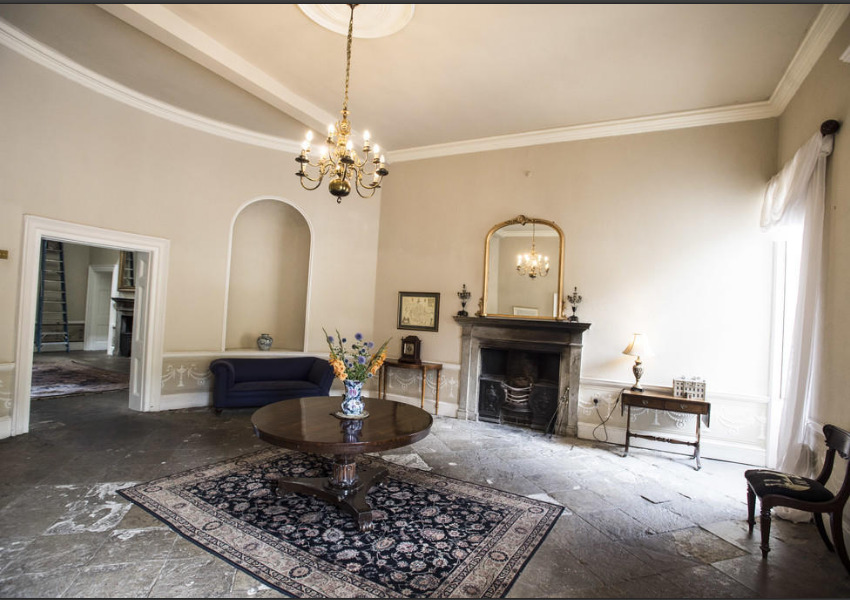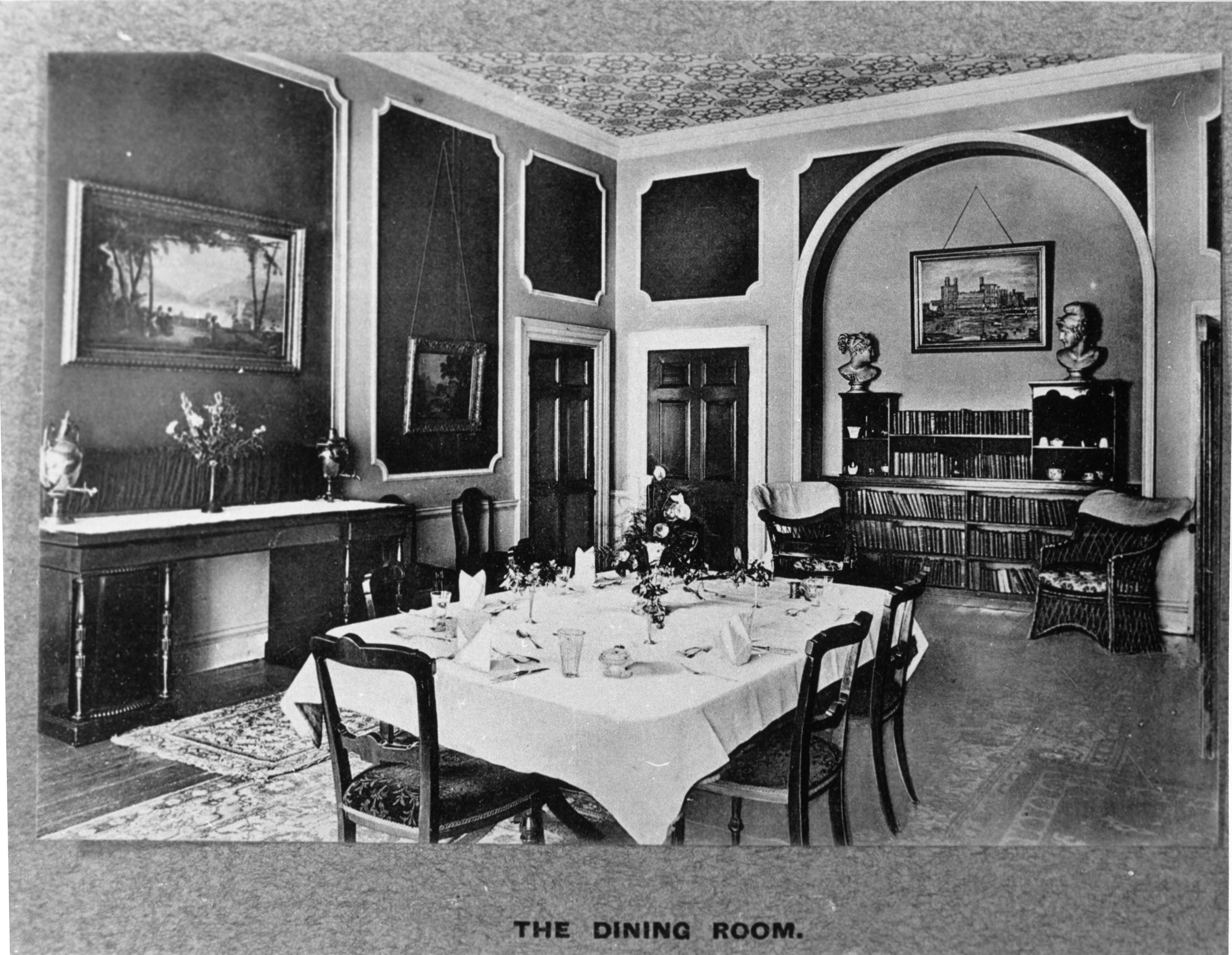The history of Thundercliffe Grange
It was considered a utopian dream when a group of work colleagues clubbed together to buy a decaying Georgian mansion in 1980.
But over 40 years of hard graft and determination later, the residents of Thundercliffe Grange would not exchange their home for all the cities so bright.

Thundercliffe Grange is possibly the UK’s oldest surviving example of a co-housing development. Nestled in a valley on the Blackburn Brook between Thorpe Hesley and Ecclesfield, the seven-bay, three-storey property sits in 22 acres of land. There is an orchard, wild meadow, stable yard, Georgian plunge pool, and allotments. A stream runs through the land, marking the historic boundary between Rotherham and Sheffield.
It was the family seat of the Lords of the Manors of Kimberworth and Rotherham, a private asylum for wealthy ladies, and a hospital for disabled children. But today, Thundercliffe Grange is privately owned by a co-operative of residents, having been turned into 12 separate apartments and cottages.
Most of the repair and renovation work was done by the residents over a three-year period in the early ‘80s. Since then, some apartments have been sold on to new residents, but five are still owned by original members of the co-op. All residents have a share in the property’s freehold and meet monthly to discuss the ongoing works’ programme. They keep in the spirit of the 18th Century and use the ground floor rooms as communal space with a gym, dining room, workshop, kitchen, and laundry.

One of the residents, Jeremy Blundell, tells us the idea first came about in 1974 when local government in Yorkshire was reorganised and Rotherham had an influx of newcomers. A group of colleagues at the council’s library department began socialising and explored the idea of improving life by sharing resources, particularly housing.
“There were about five of us initially, so we looked at large rectories and doctors’ houses. It was pure coincidence that we came to buy Thundercliffe Grange. One evening I was driving up Wortley Road and saw a friend trudging up in the rain. I gave her a lift and she was going to work at Thundercliffe which was the children’s hospital then. I’d never heard of it never mind seen it, but she said it was closing the following week and was going up for sale,” Jeremy says.
The hospital was owned by the local authority and was used to house around 40 mentally and physically disabled children, including those who had been born with thalidomide. It was a major employer in the area in the 1970s.
Jeremy took a brochure back to the group to discuss who agreed the asking price seemed possible. However, due to the sheer size of the estate, which was at a much larger scale than they envisioned, it meant they had to look at expanding the group. They enlisted more people, most of whom were known to the original five friends, until there were 12 units involved comprising of single people and young families.
The sale went through in 1980 and most of the exterior repairs were finished within two years. Then each owner had to refurbish and decorate their individual apartment.

“It took time as we had to convert the hospital wards into living accommodation. It became an economic necessity to do the work ourselves, so we’d turn up, grab a shovel and get on with it,” Jeremy says.
“It was a while before we could relax in these big, attractive flats. We’ve never actually finished the job as there are still things to do on the house and in the grounds 40 years on.”
Restorations were done sympathetically to preserve the period features of the building such as the sash windows, coving woodwork, and wooden flooring. The building was designed by John Platt, an architect and stonemason from Thrybergh who had worked on other large properties such as Wentworth Castle, Wortley Hall and Ferham House. There is an original floating cantilever staircase in the instantly recognisable Platt style, similar to the ones he created at Clifton Park Museum and Aston Hall.

Platt was commissioned by Thomas Howard 3rd Earl of Effingham to build a new house on the site of a 12th century grange that was originally owned by the Kirkstead Abbey monks. After the dissolution of the monasteries in the late 1530s, Thundercliffe was bought by the Rokebys of Ackworth who had leased the land for many years. It then passed by marriage to the Wombwells, Shirecliffes, and Greens before it was sold to Hugh Mellor, the farmer of the adjacent Grange Park Farm.
Howard, who was the lord of the manor of both Rotherham and Kimberworth, bought the site from his tenant Mellor in 1771. He planned to relocate the family’s seat from Holmes Hall, thought to be instigated by the continued expansion of the nearby Walker Ironworks.
The Earl lived at Thundercliffe Grange until 1789 when he became Captain General Governor of Jamaica. He died without an heir two years later, and the earldom and Thundercliffe Grange passed to his brother, Richard, who also died childless in 1816.
After that, the title became extinct until it was revised in 1837 for a distant relative, Kenneth Alexander Howard. Thundercliffe remained in the Howard family until 1860 when they moved to Tusmere in Oxfordshire.
During the Victorian period, Thundercliffe was rented by Dr James Atkinson and then Dr Mould as a private asylum for ladies. Back then, women were sometimes incarcerated for mental illness, postnatal depression or dementia. Ladies were house two to a room at Thundercliffe Grange and the state rooms were their recreation space. Some stayed there indefinitely, while others were cured and released back to their families.

Thundercliffe Grange is an important piece of Rotherham history. But because of its discreet location, and being privately owned, not many people know of it. That’s why, in recent years, the owners have opened their doors to the public as part of Heritage Open Days.
“We thought people would come for the history and architecture, but we’ve found they mostly come out of curiosity to see what we’ve done. There are some people who may have walked through the grounds before or may have had family who worked here. Maybe even jus a connection to the local area. With places like the Taj Mahal, you know what you’re getting when you visit. But people have been truly blown away, calling it very enthusing.”
What the residents have created at Thundercliffe Grange is nothing short of extraordinary. A village-like community under one roof, where everyone has a front door they can close to the world but help or companionship is never too far away.
For more information, visit www.thundercliffegrange.co.uk






